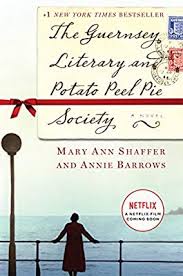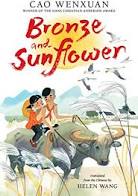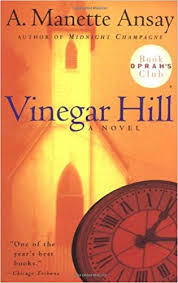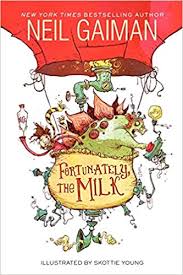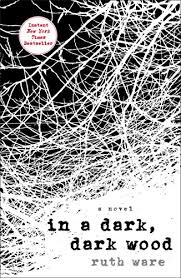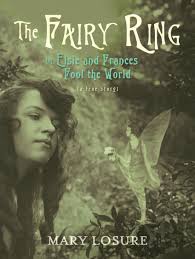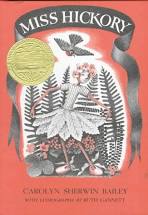
Miss Hickory
Carolyn Sherwin Bailey (Juvenile Fiction)
Miss Hickory had an apple-wood twig body, hickory nut head, and wore a rather smart checked gingham dress. She lived a fine and comfortable life under the lilac bush in a corncob house. Before winter set in, Great-Granny Brown would bring Miss Hickory’s house (and her along with it) into the Old Place and set both on the windowsill to pass the time amiably until springtime. But this year, Crow had brought some terrible news. It seems that Great-Granny Brown has closed up the Old Place for the winter and has decided to spend the winter in Boston in some place called the Women’s City Club. Abandoned, dismayed, and soon-to-be evicted, what is Miss Hickory to do? Leave it to her old friend Crow to not only offer up a solution, but an adventure to boot!
1947 Newbery Medal Winner, Miss Hickory is NOT to be confused with some run-of-the-mill children’s story. Oh no! For author Carolyn Sherwin Bailey advises her readers at the beginning of her story that all of her characters—from Miss Hickory to Crow to Squirrel and even Hen-Pheasant—are very much real and alive (save for one, but I don’t wish to spoil the story). Bailey gives us a wonderful adventure tale that centers around one very prissy, self-centered, judgmental, and rather pretentious Miss Hickory. We follow her seasonal exploits in the orchard that sits beside the Old Place. Readers get to meet many colorful characters such as fearful Ground Hog, spoiled Chipmunk, and worldly Wild-Heifer. As Miss Hickory encounters each of these wonderful creatures, she grows a bit in experience, character, and self-actualization.
Miss Hickory is a beautifully told story complemented by Ruth Gannett’s exquisite lithographs. Her drawings give an earthy and rustic feel to a tale celebrating nature and wildlife. Bailey spent her summers at a home in New Hampshire that adjoined an apple orchard. Her keen observational skills allow readers to be transported to a world where you can delight in the purple asters, smell the fragrant pine needles, taste the berries and nuts, and feel the crunch of autumn leaves beneath your feet.
SPOILER: Although younger readers may find the ending a bit sad, Miss Hickory is truly a celebration of discovering your personal worth and finding your place in the world (adults may have to help them look for this silver lining). In the end—although Miss Hickory was a bit “hardheaded”—she discovered that home is more than a structure, it’s a sense of belonging. And although she was a bit of a nut (sorry!), Miss Hickory shows us that is does pay to listen to your heart rather than your head, that you can’t always judge a book by its cover, and—most importantly—that you should always, ALWAYS be nice to squirrels because making them angry would be just plain…nutty.
Rating: 4/5
*Book cover image attributed to www.discoverbooks.com
**Want more? Visit our Facebook page at www.facebook.com/thedustyjacket


